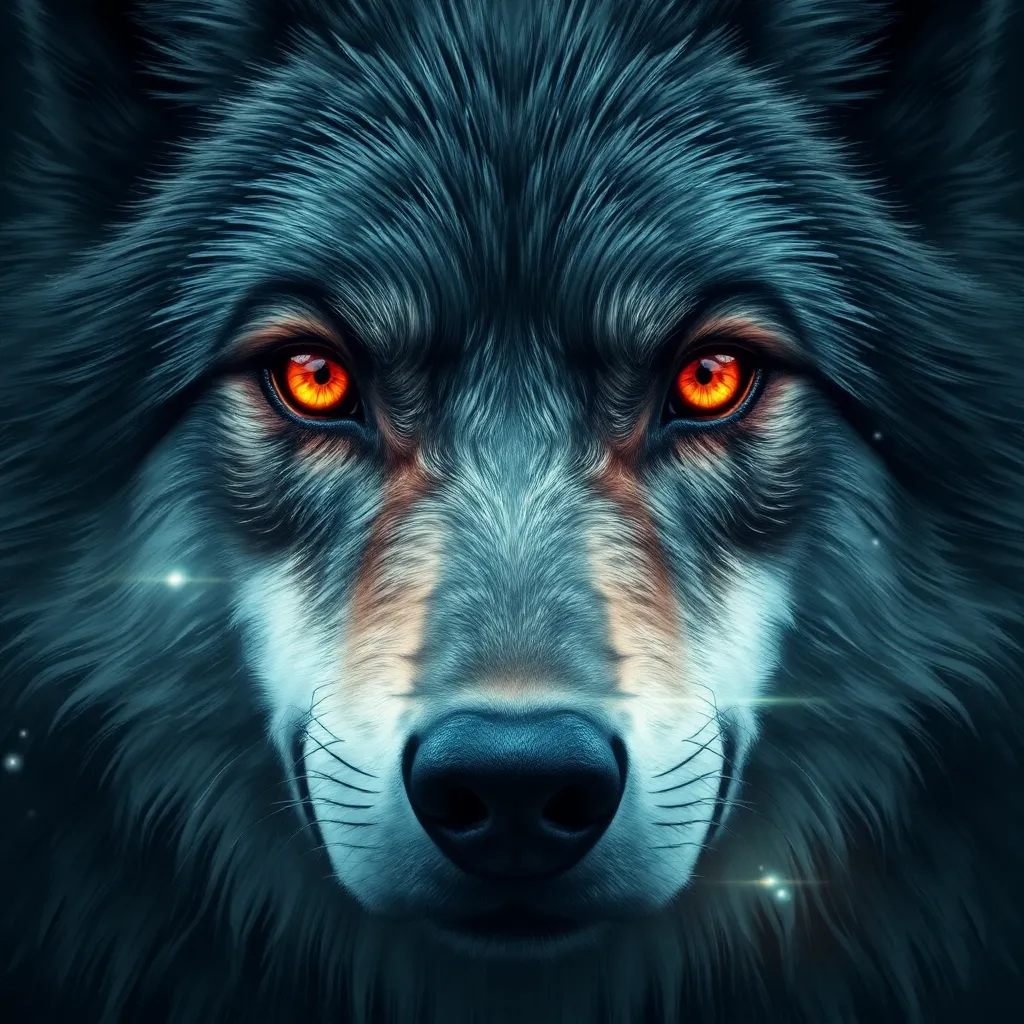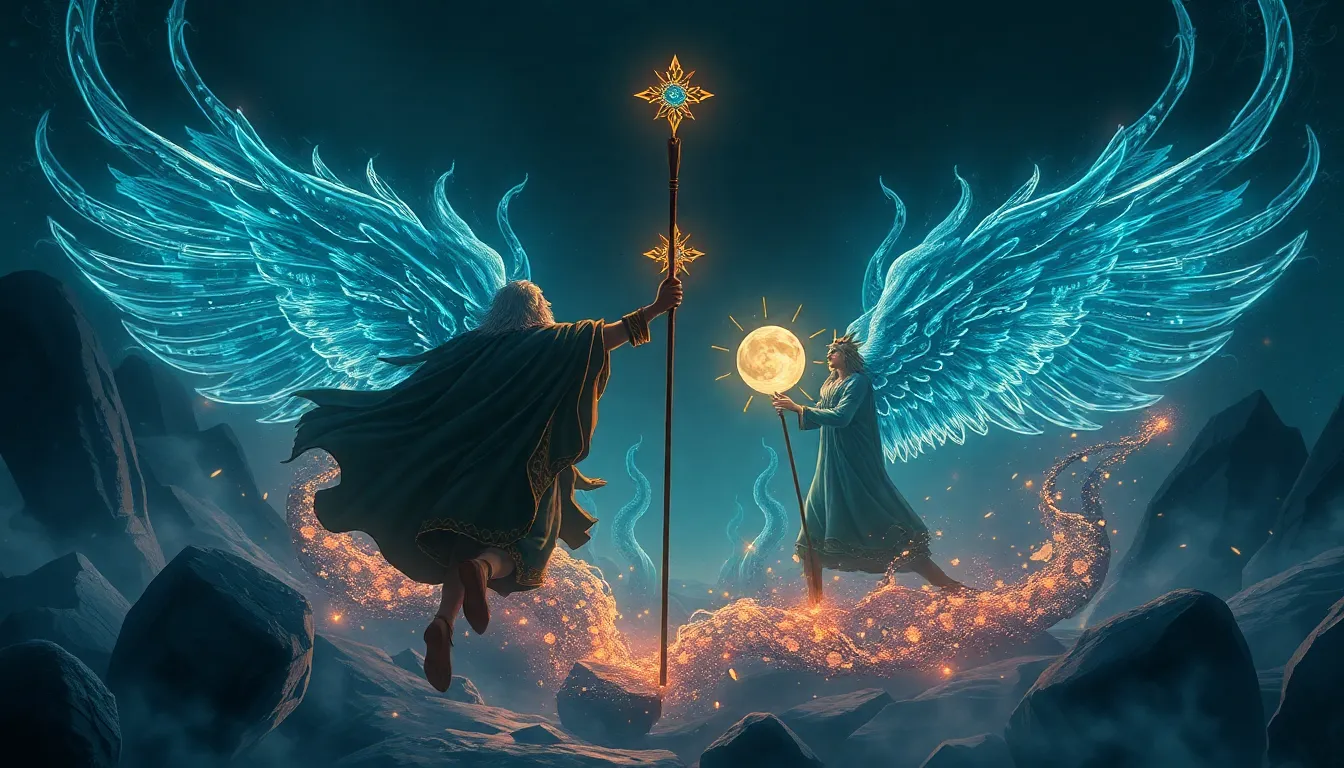Fenrir’s Eyes: The Wolf’s Gaze as a Symbol of Power and Prophecy
I. Introduction
Fenrir, the monstrous wolf of Norse mythology, is a figure surrounded by awe and fear. Born of the trickster god Loki and the giantess Angerboda, Fenrir’s story is interwoven with themes of fate and destruction. His eyes, fierce and penetrating, are often interpreted as symbols of both power and prophetic insight, reflecting the duality of his nature.
In many cultures, eyes are considered windows to the soul, often symbolizing deeper meanings such as power, wisdom, and foresight. In the context of Fenrir, his gaze embodies the ferocity of a wild creature while simultaneously hinting at the foreboding prophecies of his role in the cosmos.
This article will explore how Fenrir’s eyes serve as a representation of both power and prophetic insight within the mythological narrative, intertwining the concepts of dominance and destiny.
II. The Mythological Background of Fenrir
A. Origins and lineage of Fenrir
Fenrir is a central figure in Norse mythology, known as a child of Loki and Angerboda. His lineage connects him to various other significant creatures, including Jormungandr, the World Serpent, and Hel, the goddess of the underworld. His birth is prophesied to bring about chaos and destruction, marking him as an essential part of the mythological narrative surrounding the end times.
B. Role in Norse cosmology and the Aesir-Vanir conflict
In the intricate web of Norse cosmology, Fenrir’s existence is tied to the Aesir-Vanir conflict. The Aesir, the principal pantheon of gods, recognized the threat posed by Fenrir. Despite attempts to bind him, his immense strength thwarted their efforts, leading to his eventual role in Ragnarök, the cataclysmic event that heralds the end of the world.
C. The prophecy surrounding Fenrir’s fate
According to the prophecies, Fenrir is destined to break free from his chains during Ragnarök, leading to the death of Odin, the Allfather. This foretold doom solidifies his position as a harbinger of destruction, a role that is inseparably linked to the symbolism of his eyes.
III. Symbolism of the Wolf in Various Cultures
A. General symbolism of wolves in mythology
The wolf is a powerful symbol in many cultures, often representing loyalty, courage, and ferocity. In various mythologies, wolves are seen as guardians, hunters, and even as embodiments of the wild spirit of nature.
B. The wolf as a symbol of strength and ferocity
- Native American Mythology: Wolves symbolize loyalty and family.
- Roman Mythology: The she-wolf that nursed Romulus and Remus represents nurturing strength.
- Celestial Associations: In some cultures, wolves are associated with the moon, representing mystery and intuition.
C. Comparative analysis: Fenrir and wolves in other mythologies
While many cultures celebrate the wolf’s positive attributes, Fenrir’s portrayal is primarily negative, emphasizing chaos and destruction. This contrast illustrates the complex symbolism of wolves in mythology, where they can embody both protective and predatory qualities.
IV. The Eyes as a Representation of Power
A. The gaze as a symbol of dominance
In many cultures, the eyes are considered a powerful tool of communication and dominance. Fenrir’s gaze is often depicted as fierce and unyielding, symbolizing his role as a dominant force in the cosmos.
B. Fenrir’s eyes in battle: Fear and intimidation
In Norse literature, Fenrir’s eyes are described as glowing with an otherworldly intensity, instilling fear in those who dare to face him. His gaze alone is enough to intimidate the bravest of warriors, reinforcing his position as a formidable opponent in battle.
C. Interpretation of Fenrir’s gaze in Norse literature
Literary descriptions of Fenrir often emphasize the piercing nature of his eyes, suggesting a deeper insight into the fate of the world. This portrayal enhances the theme of his gaze as a symbol of both power and impending doom.
V. Prophetic Elements of Fenrir’s Gaze
A. The prophetic nature of his eyes in mythology
Fenrir’s eyes are not just instruments of intimidation; they also possess a prophetic quality. His gaze is said to foresee the chaos of Ragnarök, marking him as a pivotal figure in the unfolding of destiny.
B. Fenrir’s role in Ragnarök and the foretelling of doom
As Fenrir prepares to engage in battle during Ragnarök, his eyes reflect the inevitability of destruction. This connection to prophecy elevates his character from mere beast to a symbol of fate itself.
C. Analysis of prophetic visions associated with Fenrir
Various texts, such as the Völuspá, describe visions of Fenrir’s role in the end times. His gaze is often depicted as a harbinger, foretelling the death of gods and the collapse of the world order.
VI. Artistic Representations of Fenrir’s Eyes
A. Exploration of visual art depicting Fenrir
Throughout history, Fenrir has been a popular subject in art, with many artists capturing the intensity of his gaze. These artistic representations often focus on his eyes as windows into his ferocious spirit.
B. Literary interpretations and their impact on perception
Literature has played a significant role in shaping the perception of Fenrir. Authors have elaborated on the symbolism of his eyes, linking them to themes of power, destiny, and destruction.
C. Modern adaptations in popular culture
In contemporary media, Fenrir’s character has been adapted into various forms, including films, video games, and literature, often maintaining the symbolism of his eyes as a representation of power and prophecy.
VII. The Influence of Fenrir’s Symbolism on Contemporary Society
A. Fenrir as a symbol in modern literature and media
Fenrir’s legacy continues to resonate in modern narratives, where he often symbolizes the struggle between chaos and order. His eyes remain a powerful emblem of the potential for destruction and the inevitability of fate.
B. Reflections of power and prophecy in contemporary narratives
Modern stories often draw parallels between Fenrir’s symbolism and contemporary themes of leadership, power dynamics, and the consequences of choices made by individuals and societies.
C. The relevance of Fenrir’s gaze in discussions of leadership and destiny
Fenrir’s gaze serves as a metaphor for leadership qualities, embodying the idea that true power comes with foresight and responsibility. In discussions about destiny, his character prompts reflection on the choices that lead to inevitable outcomes.
VIII. Conclusion
Fenrir’s significance in Norse mythology extends beyond his role as a monstrous wolf; his eyes embody the essence of power and prophetic insight. As a symbol of impending doom and chaos, Fenrir remains a crucial figure in understanding the Norse narrative of fate and destruction.
The enduring legacy of Fenrir’s eyes as symbols of power and prophecy highlights the importance of mythological symbols in exploring human nature and societal dynamics. These themes continue to resonate in contemporary culture, reminding us of the intricate relationship between power, prophecy, and the destinies we forge.




